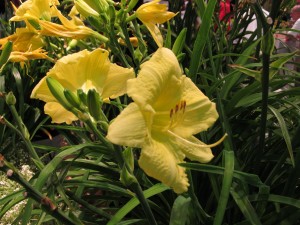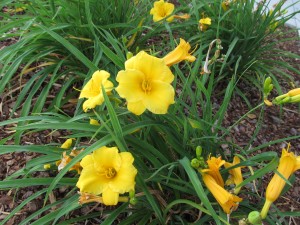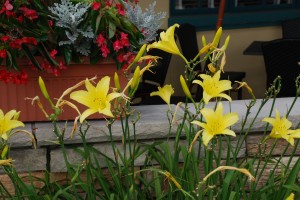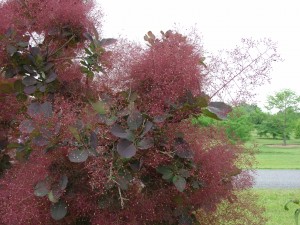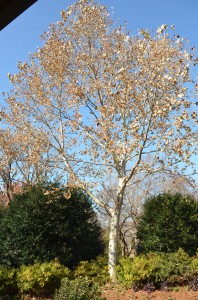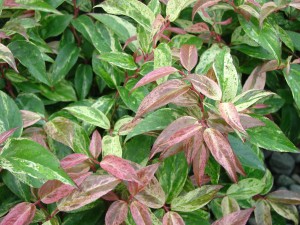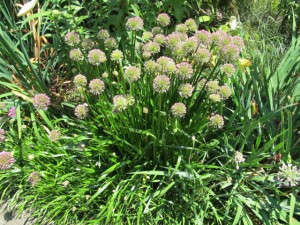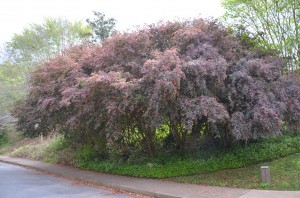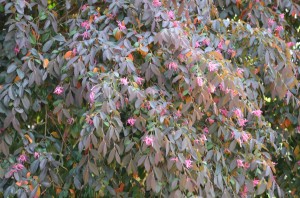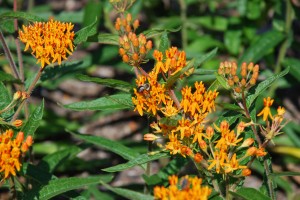
Common milkweed (Asclepias tuberosa)
Milkweeds, aka butterfly weed (
Asclepias spp.), are the favorite food of the Monarch butterfly. Farmers and most gardeners rate them as a noxious weeds. They’re commonly spotted growing along roadsides or in unplowed ground (USDA hardiness zones 3-9). Milkweeds average 3 feet in height, but may vary from 2-6 feet depending on species. Most species are classified as herbaceous perennials.
As its common name suggests, milky sap pours out from the stems when cut. Leaves vary in shape with species (see below) and are either light to dark green in color. Flower color also varies by milkweed species, from pink, purple, or orange. They bloom from June to August and flowers of some species are fragrant. The cucumber-like seed pods set in autumn. Seed pods open and release hundreds of aerodynamic seeds carry over many miles by the wind.
Beginning in the southern U.S. and progressing northward U.S., milkweed blooming time coincides with the arrival of Monarch butterflies in your growing zone. Flowers are an important source of nectar for many insect pollinators, including butterflies and hummingbirds. Milkweeds are the primary host for monarch butterfly larvae (caterpillars). Female monarchs deposit their eggs on the milkweed plants and emerging caterpillars (larvae) emerge feast on the leaves. The resting pupa stage is on milkweeds.
Milkweeds are toxic to most predators of Monarchs, but are not harmful to feeding Monarch caterpillars. The caterpillars do not die, but the leaf toxins make the Monarchs poisonous to predators! There is tremendous variation in the poison levels of the foliage. A. tuberosa are rated low; A. verticillata and A. viridis are rated among the highest. Historically, milkweeds have been valued for their medicinal properties.
Milkweeds grow best in full sun and in a well-drained soil. Some are very drought tolerant and thrive in ordinary soils; they need little or no fertilizing. Some cope with wet soil conditions and others do not. Milkweeds blend well among other butterfly floral favorites in mixed borders, meadows and natural areas.
You may collect and save milkweed seeds in early fall. The seeds are best sown in the soil to overwinter there and germinate in the spring. You may also opt to sow vernalized (pre-chilled) seeds in a greenhouse or sun room in late winter or transplanted into outdoor beds after the danger of frost has passed in spring. Keep the soil moist but not soggy.
When plants have two sets of leaves, transplant them to their permanent, sunny location outside. Space plants about two feet apart, if planting in a row. A milkweed plant produces a long taproot which does not like to be disturbed after planting. Mulch can help conserve water.
The following seven (7) milkweed species are favorites of Monarch butterflies, bees, and other butterflies. Most are available from perennial and wildflower sources on-line.
Butterfly weed (A. tuberosa) – showy orange flowers; popular garden choice because of hardiness, long-life, and non-invasiveness; 1-2 feet height
Common milkweed (A. syriacus) – purple flowers blooms; aggressively spreads by rhizomes and self-seeds; 3 feet height.
Swamp milkweed (A. incarnata) – red flowers; 3-4 feet height
White milkweed (A. variegata) – striking clusters of snowy white flowers; 1-4 feet height
Whorled milkweed (A.verticillata) – small white flowers; bland narrow needle-like leaves; 1-3 feet height
Spider milkweed (A.viridis) – spring blooming green colored flowers; 1 foot height
Purple milkweed (A. purpurascens) – magenta colored flowers; 3 feet height
Scarlet milkweed (A. curassavica) – red and orange flowers; 2-3 feet height; annual (zone 9-11)

